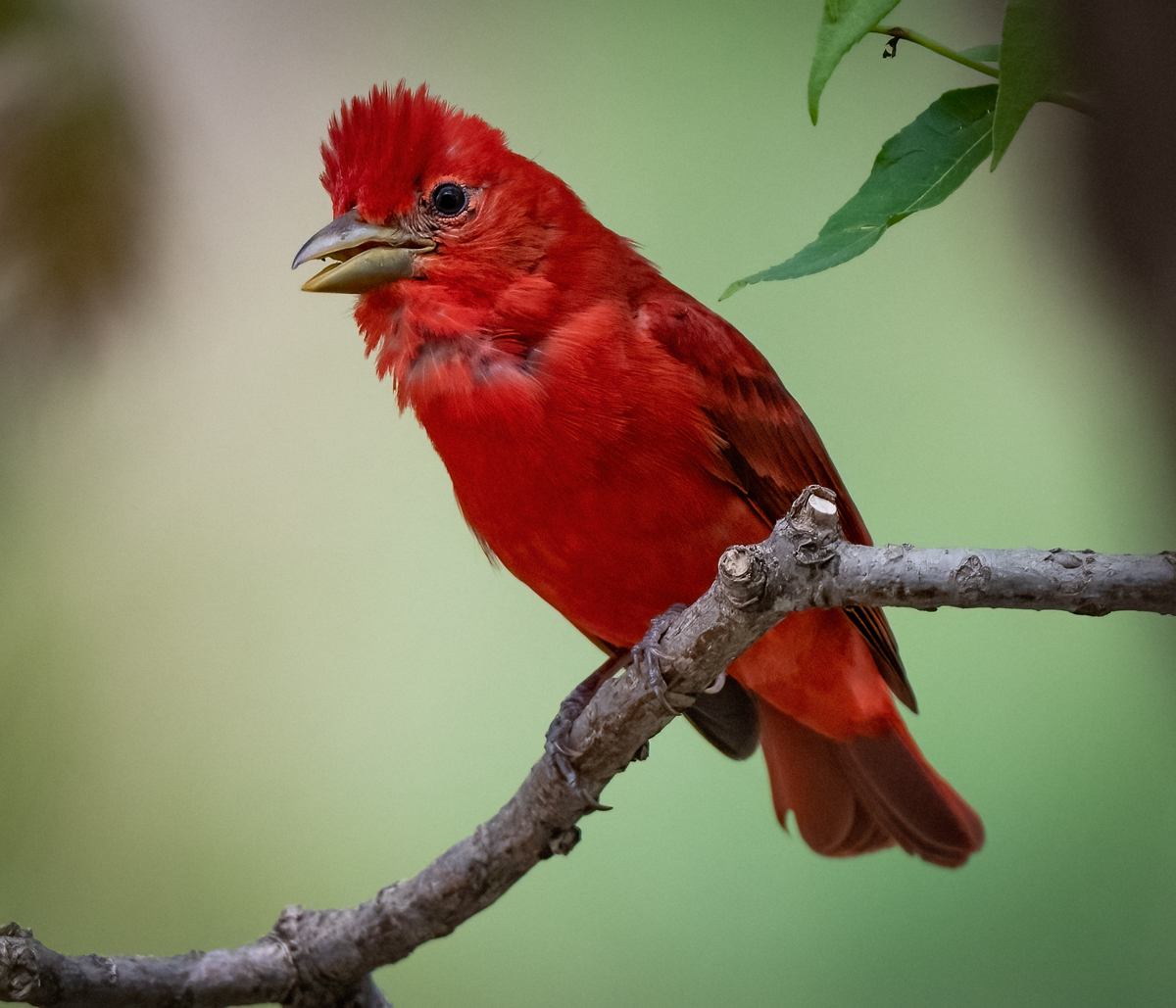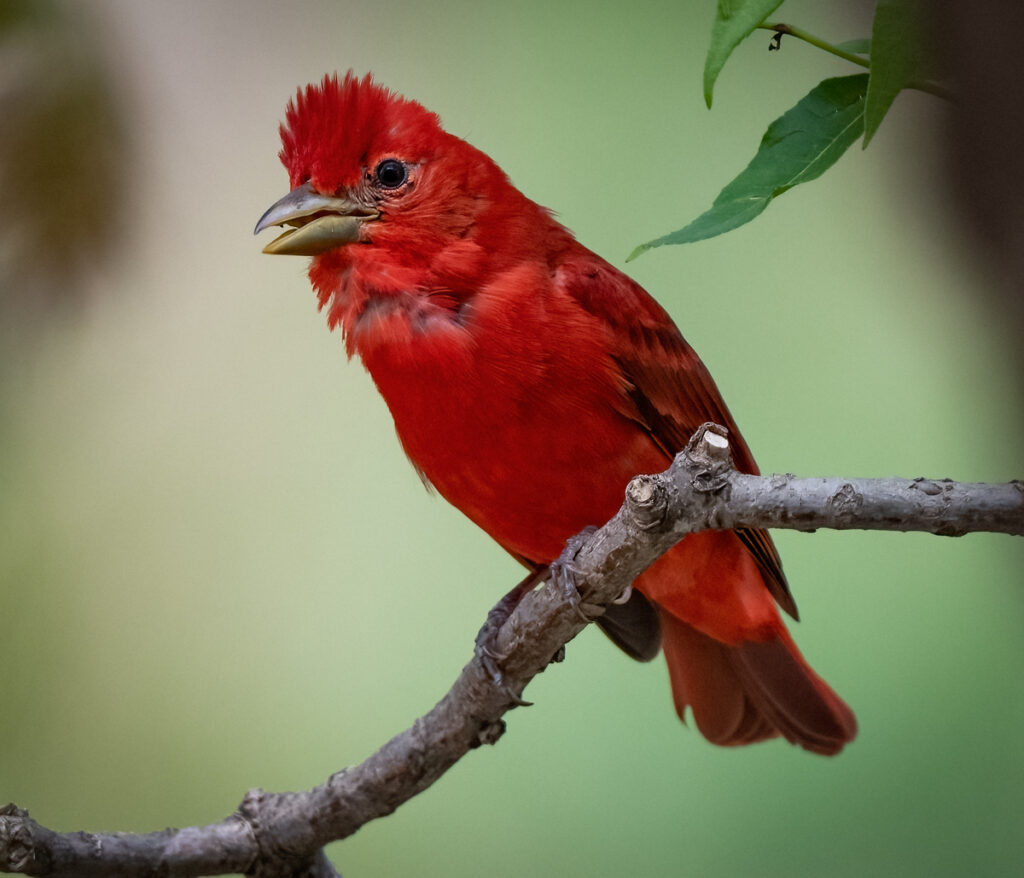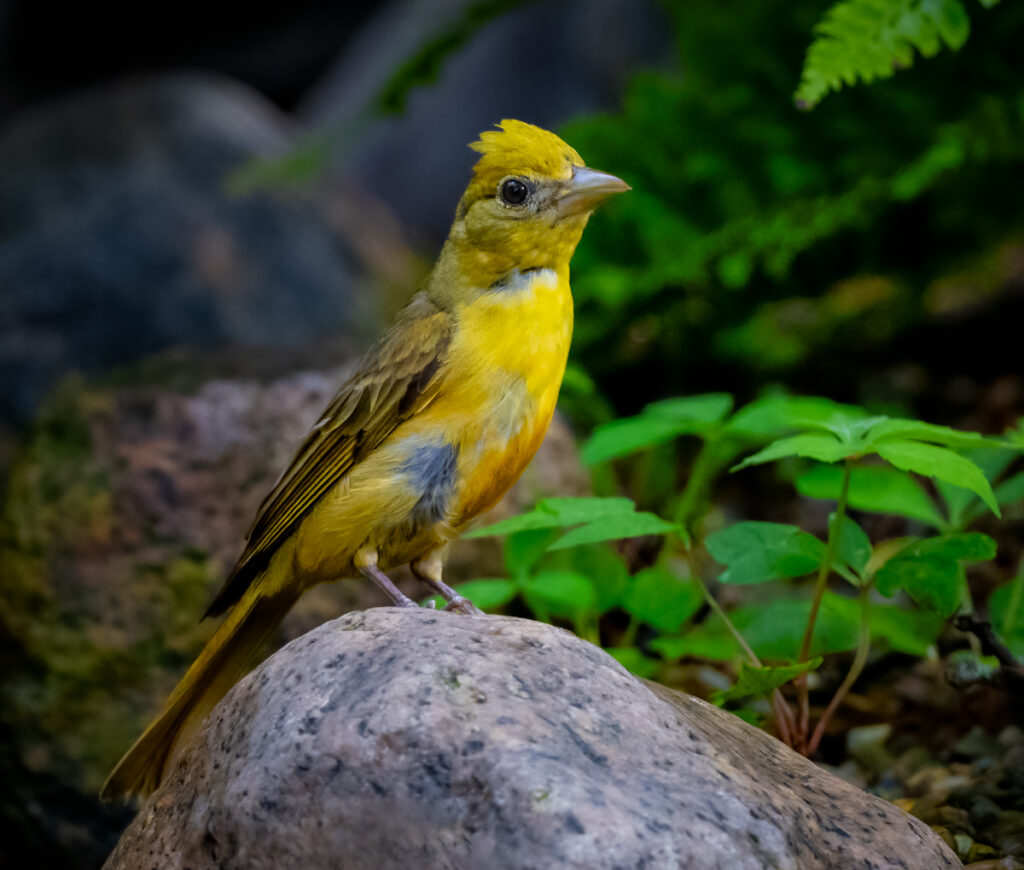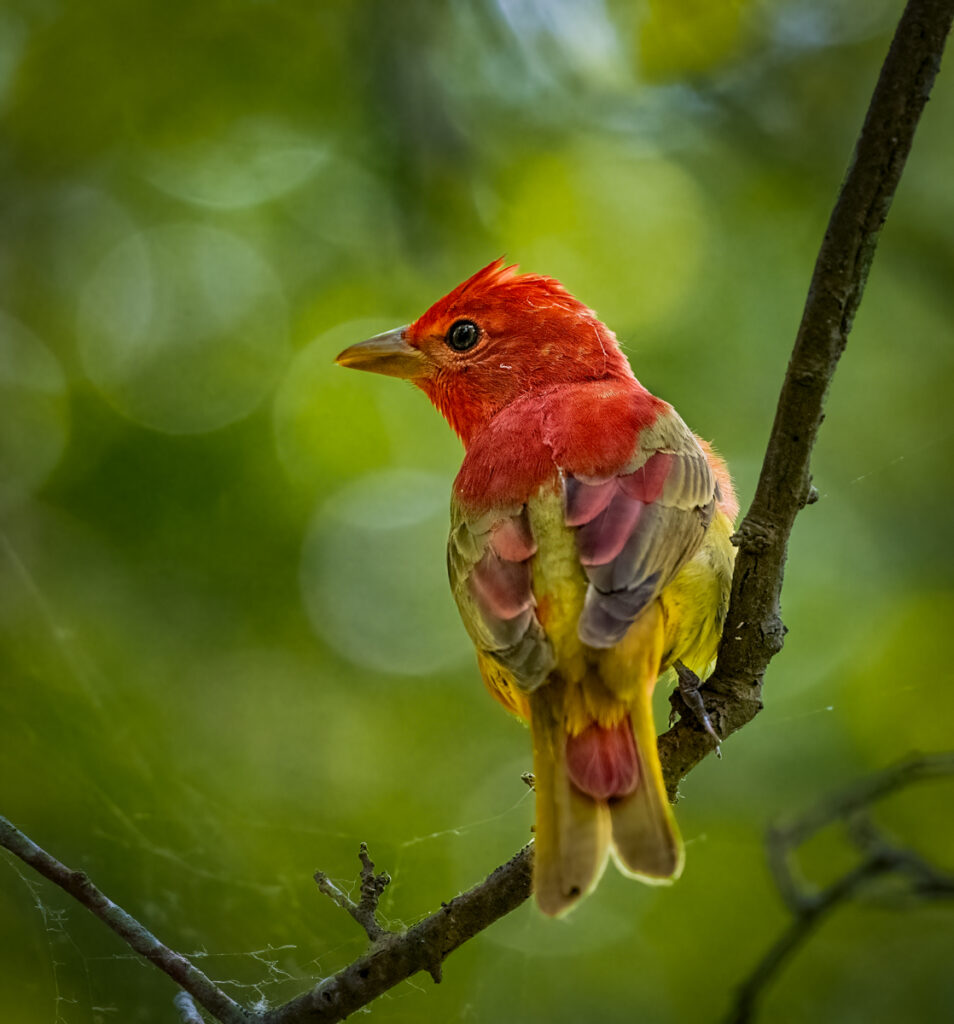
What do you call a bird when you don’t know what it is? Why, “Unknown small bird,” of course. This is what the original genus name for the Summer Tanager was until genomics gave scientists the opportunity to rebrand these medium-sized woodland birds and place them snugly with the Cardinal family. Today’s blog looks at the only bird with the hottest season in its name.

Tijepiranga is a Brazilian Tupi word that means ‘unknown small bird’, and fittingly contributed to the genus name for the conspicuous brightly colored birds seen flitting from tree to tree as the English naturalist Mark Catesby marked their entry in his seminal The Natural History of Carolina, Florida and the Bahama Islands (1729-1732). The common word ‘tanager’ is thought to come from another Tupi word, tangara, and until their official split in 2009, there were eleven species of tanager in the genus Piranga. One such species attracted the attention of Carl Linnaeus leading him to refer to it as the type species—the true physical example of that group of organisms. He called it the “summer-red bird,” assigning the Latin word for finch, Fringilla, and the suffix rubra meaning red, a nod to the male’s vibrant crimson plumage. Over time, summer tanager became the official name, the only bird species in the world to bear the season in its officially accepted common name, making it a herald of the warm season’s arrival.
However, as technology advanced and our awareness to the world’s fascinatingly diverse species grew, it soon became apparent that genetically and physically, summer tanagers are actually more aligned with the Cardinal family, and in 2009 became part of the Cardinalidae family, New World birds that also contains grosbeaks, buntings, chats, and of course the cardinals themselves.
Summer tanagers are migratory birds, escaping the chill of North American winters for warmer climes in southern Mexico, Central and northern South America, although sometimes still seen as far north as Iowa and New Jersey in the east. They typically arrive in their breeding grounds, the males a few days earlier than the females in full song to establish territory, in the southeastern United States and parts of Mexico around late April or early May. It is here, in low-elevation willow and cottonwood woodlands, or higher-elevation mesquite and salt cedar stands, that many know them by another, simpler name—the beebird.

Linnaeus named the bird after the rosy or sometimes orangey-red coloring of the males, but summer tanagers exhibit sexual dimorphism, distinct differences in plumage color and often size between male and female birds. Females display a range of hues across the green and yellow spectrum, sometimes a zingy lemony glow or, more often, a far subtler warm olive tint on their upper parts, transitioning to a light yellow on their underbelly.
Despised by beekeepers, these voracious insectivores are a bee and wasp specialist, favoring them over their other meals of cicadas, grasshoppers, dragonflies, weevils and all manner of creepy crawlies, and the occasional fruits. They are excellent hawkers, a term taken from falcons, birds who demonstrate a remarkable ability of hunting on the wing. Like the perfectly named flycatchers, summer tanagers expertly pluck bees and wasps from the air, land on a perch where they then bludgeon the insect to death and smear them across a branch to remove the sting, and then swallow them as whole as they remain. However, their absolute favorite food is wasp pupae and larvae, and after methodically dispatching the adult wasps guarding the vespiary, the birds use their string bills to tear open the papery nest and pluck the young insects from their cavities.

One of the most fascinating aspects of the summer tanager’s life cycle, however, is the transformation undergone by young males, who at first are a patchwork of olive-yellow and red, lacking the uniform crimson of adulthood. This “partial plumage” is thought to serve a dual purpose, allowing them to practice courtship displays without attracting undue aggression from older, dominant males. Additionally, the subdued coloration might make them less conspicuous to predators during their first vulnerable year. Researchers found that the molting process from juvenile to adult plumage is gradual, taking place over the course of winter and spring. By the time breeding season arrives, most males have attained their full, fiery glory.


